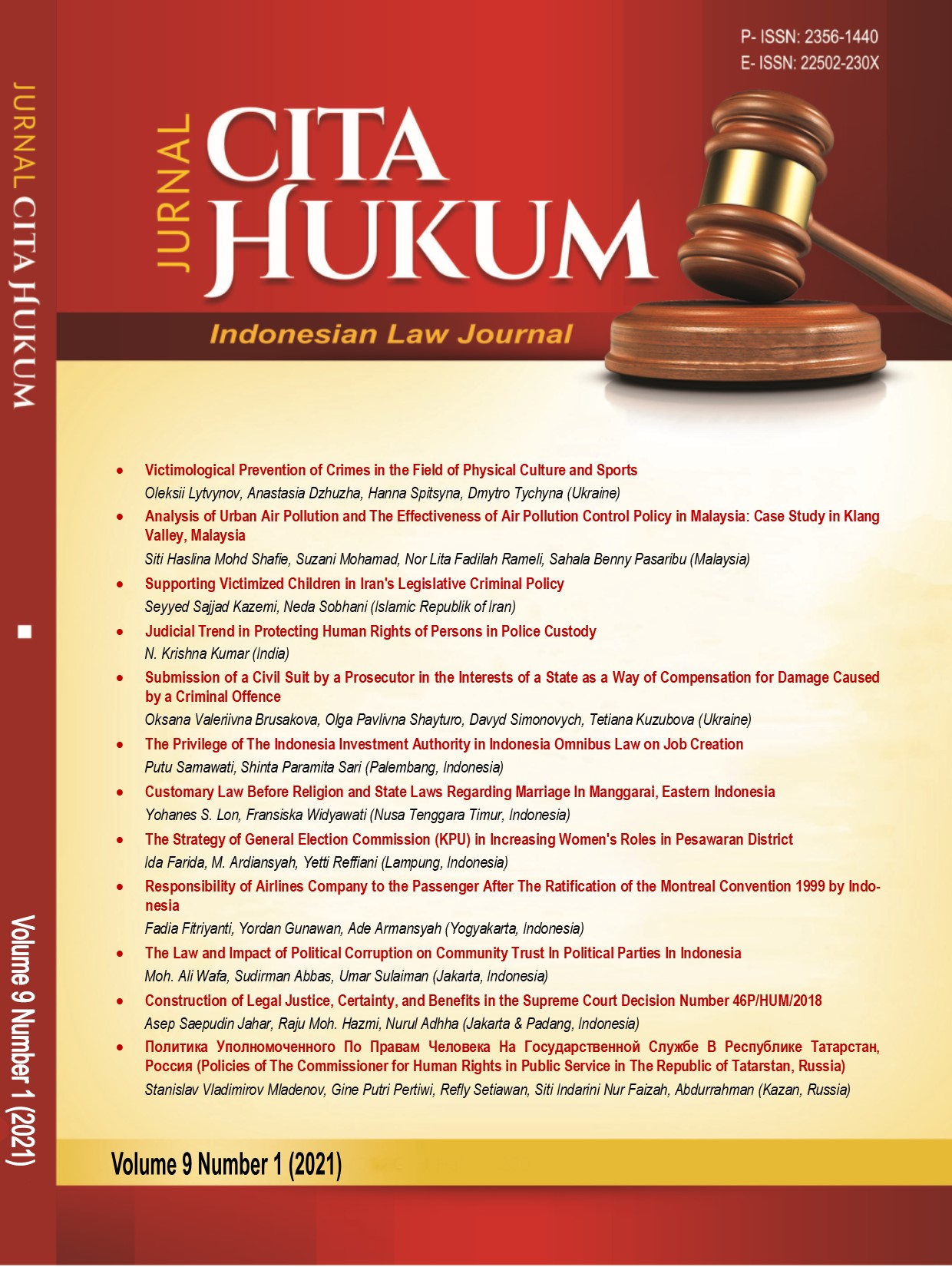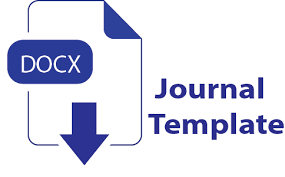An Overview of Digital Media Literacy in Digital Bangladesh
DOI:
https://doi.org/10.15408/jch.v11i2.34755Keywords:
Media Literacy, Digital Literacy, Digital Media Literacy, Digital Divide, BangladeshAbstract
The emergence of Web 2.0 has had an immense impact on the worldwide communication system, including the media. Therefore, traditional media outlets have shifted their focus exclusively to digital platforms. As a blessing of the rise of social media platforms, presses have been able to disseminate information swiftly, solicit reader criticism, and engage in two-way contact. However, gaining literacy, media, and digital media literacy competencies are crucial to benefiting from these information technologies. Besides, by acquiring these literacy skills, citizens of a developing country such as Bangladesh can significantly impact that country's Sustainable Development Goals (SDGs). Moreover, these competencies can help a country's citizens be more aware of fake news, misinformation, disinformation, and malformation. In this regard, the main objective of this article is to give an overview of digital media literacy in Bangladesh. For this purpose, the secondary data analysis method has been used to shed light on the digital inclusion process and development of information and communication technologies (ICT) in Bangladesh. Also, a literature review has been conducted on existing research on digital media literacy in the country. Finally, this research concluded that although the digital Bangladesh process has achieved great success in the short term, the supply of reasonable access to ICT for all the country's citizens will need more time. Thus, Bangladesh's government and non-government organizations and citizens need to go the extra mile to minimize this digital divide. Therefore, some potential components considered in the digital divide are citizens' position in rural vs. urban areas, literacy and income status gaps, and age range.
References
Ahmed, S. (February 23, 2023). Digital literacy is key to building a Smart Bangladesh. Daily Star. Retrieved from: https://www.thedailystar.net/opinion/views/news/digital-literacy-key-building-smart-bangladesh-3255466 (Access Date: 20.04.2023).
Al-Zaman, M.S., 2021. Social media and COVID-19 information in Bangladesh. Media Asia, 48(4), pp.322-329.
Amit, S., Barua, L. and Kafy, A.A., 2021. Countering violent extremism using social media and preventing implementable strategies for Bangladesh. Heliyon, 7(5), p.e07121.
Avgerou, C. (2010). Discourses on ICT and development. Information Technologies & International Development, 6(3), pp. 1-18.
Aziz, A. and Naima, U., 2021. Rethinking digital financial inclusion: Evidence from Bangladesh. Technology in Society, 64, p.101509.
Babar, Z. M. (2017). Digital divide: Concepts and reality in Bangladesh. Journal of Business, 2(2), 24–33. https://doi. org/10.18533/job.v2i2.74
Bangladesh Bureau of Statistics (BBS). (2022). Survey On ICT Use and Access by Households and Individuals (Preliminary Report). Statistics and Informatics Division (SID), Bangladesh Ministry of Planning. http://bbs.portal.gov.bd/sites/default/files/files/bbs.portal.gov.bd/page/b343a8b4_956b_45ca_872f_4cf9b2f1a6e0/2023-01-08-07-00-667cde6536494c707e86d483c0b618a5.pdf
Begum, D. and Elahi, M.H., 2022. Digital library services to support online learning amid COVID-19: a study of a private university library in Bangladesh. Digital Library Perspectives.
Brown, C., Czerniewicz, L., Huang, C.-W., & Mayisela, T. (2016). Curriculum for Digital Education Leadership: A Concept Paper. Commonwealth of Learning. Retrieved April 20, 2023, from http://oasis.col.org/handle/11599/2442
Buckingham, D. (2008). Definition digital literacy – What do young people need to know about digital media? In C. Lankshear & M. Knobel (Eds.), Digital literacies: Concepts, policies and practices (pp. 73–89). New York, NY: Peter Lang.
Buckingham, D. (2013). Media education: Literacy, learning and contemporary culture. Cambridge, UK: Polity Press.
Chowdhury, M. S. A. (2020). The News Literacy in Bangladesh: National Survey. Management and Resources Development Initiative (MRDI). https://mrdibd.org/wp-content/uploads/2021/07/News-Literacy-inBangladesh-National-Survey.pdf
Dijk, J. A. G. M. v. (2006). Digital divide research, achievements and shortcomings. Poetics, 34(4-5), 221-235. doi:10.1016/j.poetic.2006.05.004
European Commission (2007). A European approach to media literacy in the digital environment. Retrieved from http://eur-lex.europa.eu/LexUriServ/LexUriServ.do?uri=COM%3A2007%3A0833%3AFIN%3AEN %3APDF
Economist Intelligence Unit (EIU). (2012). Smart policies to close the digital divide. Retrieved from: https://www.afyonluoglu.org/ PublicWebFiles/ Reports/2012-EIU%20Smart%20Policies%20 to%20Close%20 theDigital%20Divide.pdf.
Gee, J. P. (1999). The new literacy studies and the “social turn”. Retrieved from http://files.eric.ed.gov/fulltext/ED442118.pdf
Gilster, P. (1997). Digital Literacy. New York, NY: John Wiley & Sons, Inc.
Greenspan, RL, Loftus, EF. Pandemics and infodemics: Research on the effects of misinformation on memory. Hum Behav & Emerg Tech. 2021; 3: 8– 12. https://doi.org/10.1002/hbe2.228
Heeks, R. (2010). Do information and communication technologies (ICTs) contribute to development? Journal of International Development, 22(5), 625-640.
Hilbert, M. (2011). The end justifies the definition: The manifold outlooks on the digital divide and their practical usefulness for policy-making. Telecommunications Policy, 35(8), 715- 736. doi:10.1016/j.telpol.2011.06.012
Hoque, M. R., Saif, A. N. M., AlBar, A. M., & Bao, Y. (2016). Adoption of information and communication technology for development: A case study of small and medium enterprises in Bangladesh. Information Development, 32(4), 986–1000. https://doi.org/10.1177/0266666915578202
Hutton, G. and Fosdick, M., 2011. The globalization of social media: Consumer relationships with brands evolve in the digital space. Journal of advertising research, 51(4), pp.564-570.
Information and Communication Technologies Department. (2018). National ICT Policy 2018 (Registered No. D A-1). Ministry of Posts, Telecommunications and Information Technology, Government of the People's Republic of Bangladesh. https://policy.gov.bd/policy/ict-division?lang=en
Islam, A. and Tsuji, K. (2011). Bridging digital divide in Bangladesh: Study on community information centers. The Electronic Library, 29(4), 506-522. Retrieved from: https://doi. org/10.1108/02640471111156768.
Islam, M. N. & Inan, T. T. (2021). Exploring the Fundamental Factors of Digital Inequality in Bangladesh. SAGE. April-June, 2021: 1–12, Doi: https://doi.org/10.1177/21582440211021407
Islam, M.M. and Habiba, U., 2015. Use of social media in marketing of library and information services in Bangladesh. DESIDOC Journal of Library & Information Technology, 35(4), pp.299-303.
Jacki O’Neill, Kentaro Toyama, Jay Chen, Berthel Tate, and Aysha Siddique. 2016. The increasing sophistication of mobile media sharing in lower-middle-class Bangalore. In Proceedings of the Eighth International Conference on Information and Communication Technologies and Development. 1–11
Kass-Hanna, J., Lyons, A. C., & Liu, F. (2021). Building financial resilience through financial and digital literacy in South Asia and Sub-Saharan Africa. Emerging Markets Review, 100846. doi:10.1016/j.ememar.2021.100846
Koly, K.N., Saba, J., Muzaffar, R., Modasser, R.B., Colon-Cabrera, D. and Warren, N., 2022. Exploring the potential of delivering mental health care services using digital technologies in Bangladesh: A qualitative analysis. Internet Interventions, 29, p.100544.
Kamp, S. (February 13 2023). Digital 2022: Bangladesh. Datareportal. Retrieved from https://datareportal.com/reports/digital-2023-bangladesh (Access date: 20. 04. 2023).
Koltay, T. (2011). The media and the literacies: Media literacy, information literacy, digital literacy. Media, Culture & Society, 33(2), 211–221.
Lankshear, A., Knobel., M. (2008). Digital Literacies: Concepts, Policies and Practices. New York, NY: Peter Lang Publishing Inc.
Luke, A., Comber, B., & Grant, H. (2003). Critical literacies and cultural studies. In G. Bull & M. Anstey (Eds.), The literacy lexicon (2nd ed., pp. 15–36). Petaling Jaya, Malaysia: Prentice Hall.
Lloyd, A. (2017). Information literacy: Different contexts, different concepts, different truths? Journal of Librarianship and Information Science, 49(1), 3-4.
Martin, A. (2006). A European framework for digital literacy. Digital Kompetanse, 2(2006), 151–161. Retrieved from https://www.idunn.no/ file/pdf/33191479/a_european_framework_for_digital_literacy.pdf
Martin, A., & Grudziecki, J. (2006). DigEuLit: Concepts and Tools for Digital Literacy Development. Innovation in Teaching and Learning in Information and Computer Sciences, 5(4), 249–267. https://doi.org/10.11120/ital.2006.05040249
Mills, K. A. (2010). A review of the “digital turn” in new literacy studies. Review of Educational Research, 80(2), 246–271.
Mizan, A.S. and Ahmed, S.I., (2019). Silencing the Minority through Domination in Social Media Platform: Impact on the Pluralistic Bangladeshi Society (January 31, 2019). ELCOP Yearbook of Human Rights (2018), Available at SSRN: https://ssrn.com/abstract=3326478
Munshi, S.A., Mostafa, M. and Alam, M., 2018. Uses of social networking sites among postgraduate students at University of Rajshahi, Bangladesh: A study. DESIDOC Journal of Library & Information Technology, 38(1).
MRDI (2016). News Literacy: People’s perception. Dhaka: Managemnet and Resources Development Initiative (MRDI). Retrieved from: https://www.unicef.org/bangladesh/media/3981/file/News%20Literacy%20in%20Bangladesh-National%20Survey%20Report.pdf%20.pdf. Access date: (20.sha04.2023).
Muzykant, V. L.; Hossain, B., Muqsith, M. A.; and Fatima; M. J. (2022). Media Literacy and Fake News: Bangladesh Perspective. JURNAL CITA HUKUM (Indonesian Law Journal). Vol. 10 No. 2 (2022), pp. 223-238, DOI: 10.15408/jch.v10i2.25921 223.
Nova, F.F., Rifat, M.R., Saha, P., Ahmed, S.I. and Guha, S., 2019, January. Online sexual harassment over anonymous social media in Bangladesh. In Proceedings of the Tenth International Conference on Information and Communication Technologies and Development (pp. 1-12).
Prime Minister Office. (2009). Concept digital Bangladesh. https:// a2i.gov.bd/publication/concept-digital-bangladesh/
Park, S. (2011). Access to digital media and changes in digital media literacy. Record of the Communication Policy & Research Forum. Retrieved from: https://www.academia.edu/9107136/Access_to_digital_media_and_changes_in_digital_media_literacy (Access Date: 20.04.2023).
Rahman., M. A. (2008). Access to Global Information—A case of Digital Divide in Bangladesh. Retrieved from: https://repository. arizona.edu/ handle/10150/106192.
Rifat, M.R., Prottoy, H.M. and Ahmed, S.I., 2022, April. Putting the Waz on social media: Infrastructuring Online Islamic Counterpublic through Digital Sermons in Bangladesh. In CHI Conference on Human Factors in Computing Systems (pp. 1-19).
Romke, R. A. (2013). May E-Governance Create Digital Divide? Asian Business Review, Asian Business Consortium, 3(2), 100-105. Retrieved from: https://ideas.repec.org/a/ris/asbure/0113.html.
Ramadhan, S., Sukma, E. and Indriyani, V. (2019). J. Phys.: Conf. Ser. 1339 01211. 1DOI 10.1088/1742-6596/1339/1/012111
Shadat, M.W. B., Islam, M. S., Zahan, I. and Matin, M. (December 2020). Digital Literacy of Rural Households in Bangladesh. Working Paper, No: 63. BRAC Institute of Governance and Development (BIGD). Retrieved from: https://dspace.bracu.ac.bd/xmlui/handle/10361/15841 (Access Date: 20.04.2023)
Sayed, M.I. and Mamun-Ur-Rashid, M. (2021). Factors influencing e-Health service in regional Bangladesh. Int J Health Sci (Qassim). 2021 May-Jun;15(3):12-19. PMID: 34234631; PMCID: PMC8220639.
Trappel, J. (Ed.) (2019). Digital Media Inequalities: Policies against divides, distrust and discrimination. Sweden: Nordicom, University of Gothenburg.
UNESCO Education Sector. (2004). The plurality of literacy and its implications for policies and programs. Position paper 13. Paris, France: UNESCO.
Uysal, M. (2016). Eleştirel Medya Okuryazarlığı (Critical Media Literacy). In D. Elif Küçük (Ed.), Medya okuryazarlığı (pp. 15, 24-25). Siyasal Kitabevi.
Uddin, M. (2018). 'Media Literacy: What, Why, For Whom?'. Vol. October-December 2017, p. 51, Dhaka: PIB.
Waughen, K., In, S., Enterprise, F., Walton, S. M., & Sciences, C. (2015). The digital divide: A digital Bangladesh by 2021? International Journal of Education and Human Developments, 1(3), 1–8.
Zhang, H. and Zhu, C. (2016). A Study of Digital Media Literacy of the 5th and 6th Grade Primary Students in Beijing. Asia-Pacific Edu Res. DOI 10.1007/s40299-016-0285-2.












